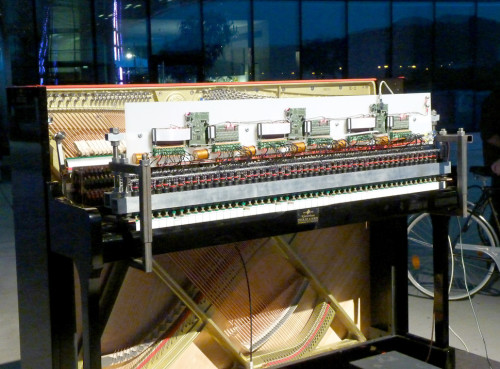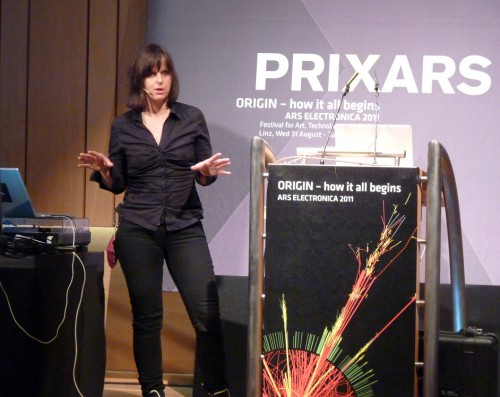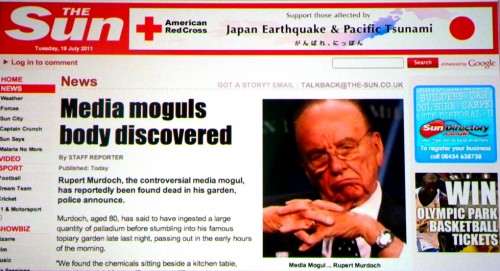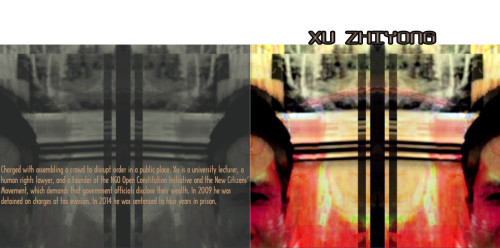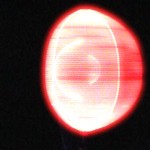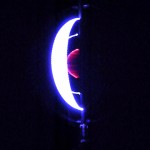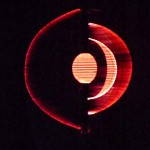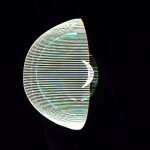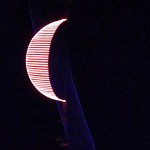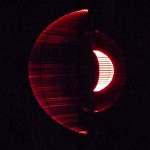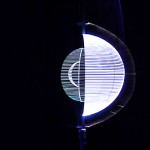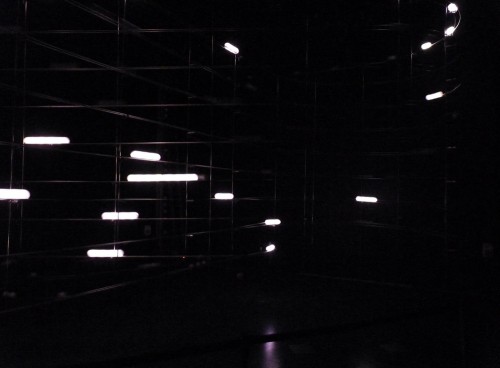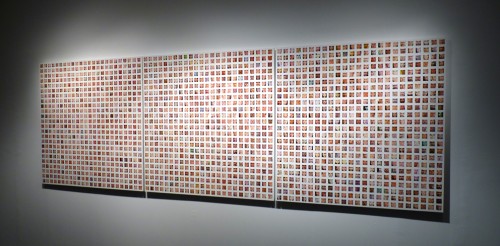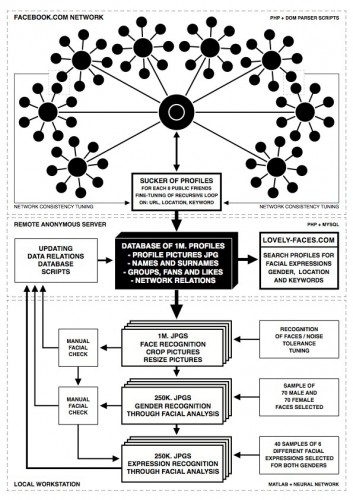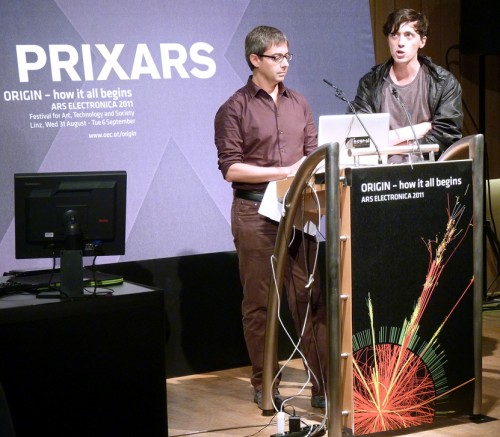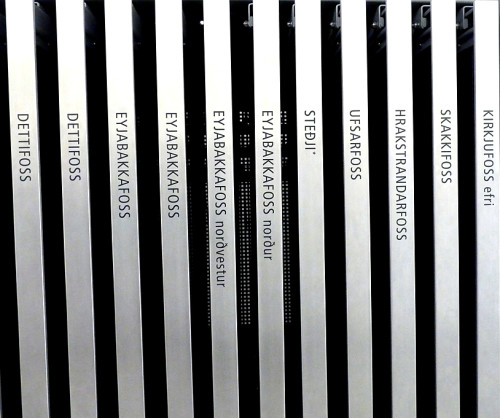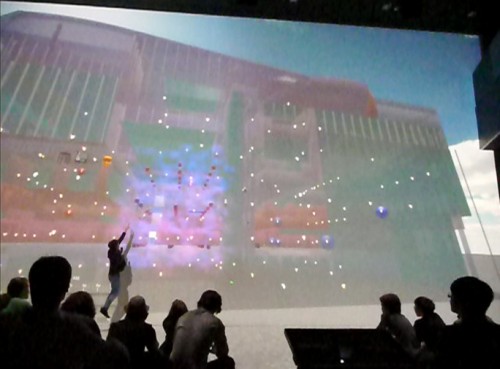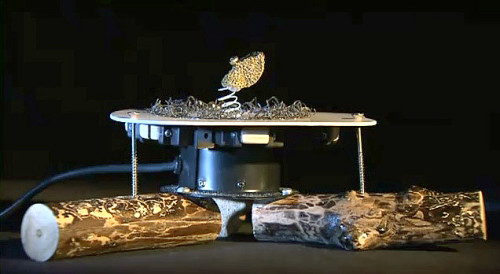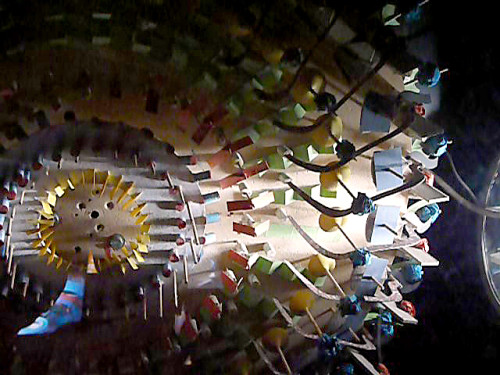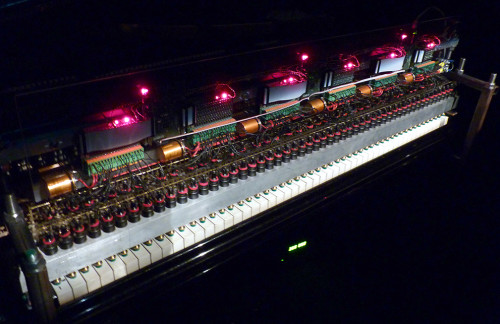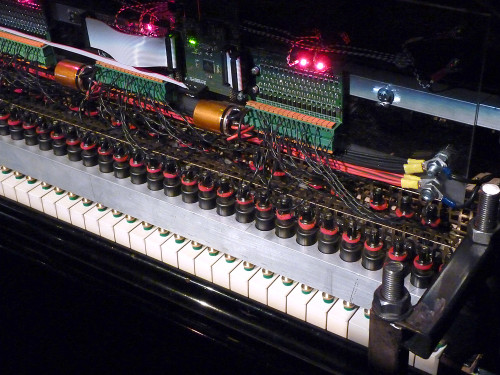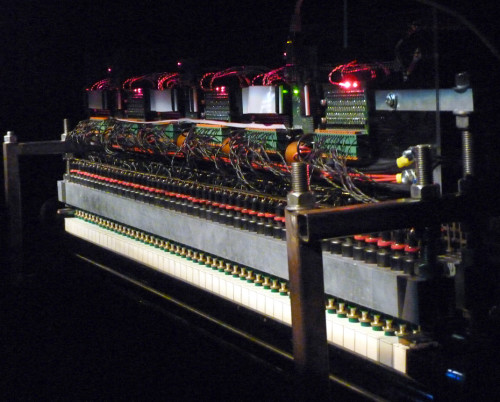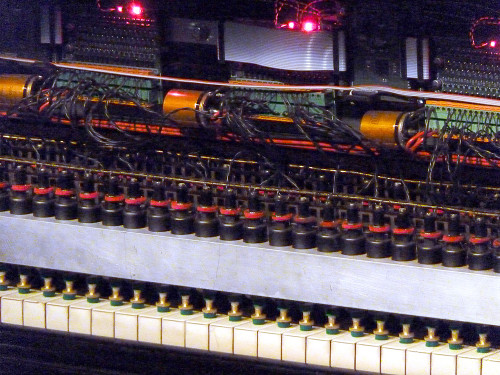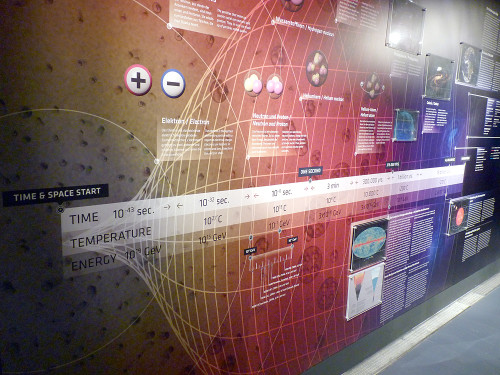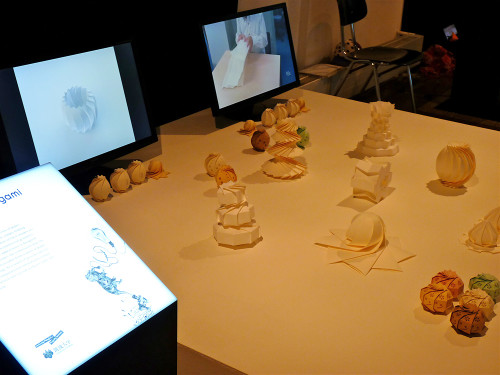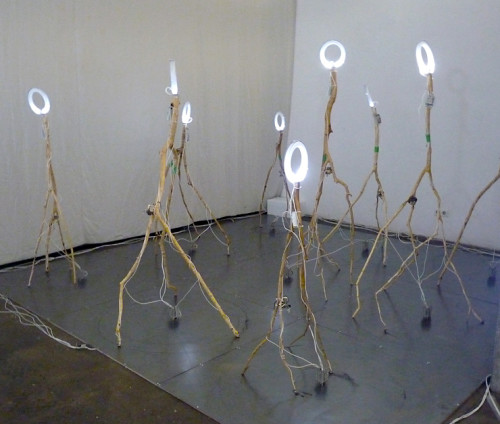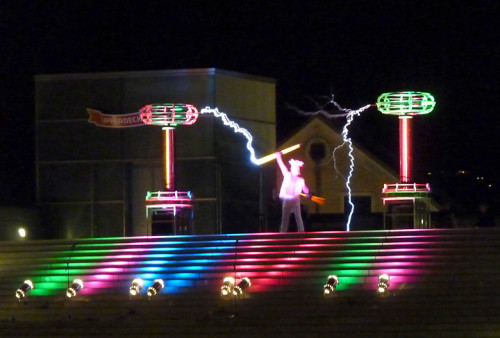1980
1960
Phật 119 ⬙ Lewella Standı
Phật 168 ⬙ Matale
Khud phxcı k̄hxcĥāng xups̄rrkh
Yogaiyachilama • ‘aqliei
1952
1968
1936
1918
1553
1871
1923
1896
1947
House Un-American Activities Committee votes to hold the “Hollywood Ten,”
a group of writers and directors blacklisted for their communist affiliations, in contempt of Congress.
“We are men of peace, we are men who work and we want no quarrel.
But if you destroy our peace, if you take away our work,
if you try to range us one against the other, we will know what to do.”
1969
1896
1957
Phật 135 ⬙ sueng anotattasreah antong
CHILDHOOD’S END
What better way to celebrate a hundred posts than to put up a great fireworks display presented in Linz, over the Donau (Danube) on the 3rd of September. 2011 – Feuerwelt. Eine Science-Fiction, plays with a fascinating idea: an extraterrestrial intelligence that wants only the best for humankind watches over the Earth and protects it. “Feuerwelt” (World of Fire) shows humankind’s search for this intelligence and depicts those moments in which the “aliens” have intervened in human history. This narrative is interwoven with human attempts to explain what cannot be grasped – by means of transcendence, mysticism and religion, as well as with the help of science. The work was inspired by the novel “Childhood’s End” by Arthur C. Clarke. The concept was by Beda Percht, the pyrotechnic visualization by Christian Czech and music by Thierry Zaboitzeff whom you may know from the group Art Zoyd. The video contains an edited 47 minutes. Sit back, in darkness, and enjoy.
(thanks to Manuel Lucca [treparus])
Jeck of all fades
Philip Jeck‘s Suite is a vinyl release which is comprised of various edits and mixes captured from recordings of various live concerts of his. This method of composition is also how he compiles his CDs – reworking and adding new elements where he thinks they should fit. With a mixture of vinyl crackle, old recordings of melodramatic strings, and a panoply of noisy textures all filtered through electronic flecks of grainy quadruplications, you’re transported to some fractionalized cosmic radio broadcast that still retains a near seamless coherence of a logical compositional strategy. Philip Jeck speaks about his work followed by a question and answer session. Also, I’m including an audio recording of his performance in Linz done on the following evening. The LP, Suite: Live in Liverpool, is available from Touch.
(thanks to Ars Electronica)
(thanks to Touch)
μέλισσα
While sitting here drinking a “handcrafted soda” made by the Thomas Kemper Soda Co.
called “Bumble Berry,” I find myself re-listening to, appropriately, the electroacoustic work, Bee,
by Apostolos Loufopoulos. A work which was inspired by the microcosmos of the kind of insects
which share an intensely energetic flying behavior. Most of the audio material comes from our natural environment filled with summer insects, sea-related sounds, and forest soundscapes, but transformed according to their individual morphologies at multiple levels. An acousmatic work that seems to place the listener right on the back of a bee as it quickly zigzags thru its flowery environment.
The work can be heard in its entirety below the video of Loufopoulos explaining its creation.
(thanks to Ars Electronica)
(thanks to Apostolos Loufopoulos)
circle quirks
Winfried Ritsch has placed seven pianos in a circle of 20 meters diameter forming a heptagram. Eighty-eight robotic “fingers” on each of the seven pianos creates the possibility of a mass of 616 parallel notes which can be controlled via Ethernet from a central mixing location. The work, Heptapiano, becomes an organic formation of sound transformed out of more or less chaotic behavior of these robotic pianos where waves of phrases are synchronized and mutated using various algorithms. The first video, by Peter Venus, is of the setup process. The second, from Marian Weger, is a better slow-walk version that what I had filmed, so I’m grateful. The third is only the final section of one of the ones that I made because the beginning moments are so dizzying that I didn’t want you to watch it just in case you had just eaten lunch. Location: entrance to the Lentos Museum.
(thanks to Peter Venus)
(thanks to Marian Weger)
energifeltet
Potential questions for the sound artist who captures field recordings: do you already have an idea of what something sounds like before possibly making a great effort to get to the sound in order to record it? If you don’t know what it sounds like, is there some deeper reason to go hunting for such sounds? If you do have a general idea of what the specific sound is like, will an already existing online archive of that particular sound serve your purpose? Once you’ve reached the origin of the sound that you’ve imagined, what happens if it doesn’t exhibit the sound quality that you envisaged? Was your trip a wasted effort? These questions seem reasonable when it comes to trying to understand the motivation of someone willing to, for example, stand on dangerously shifting and melting ice slabs in order to get the sound of 10,000-year-old melting ice.
Jana Winderen‘s background is in chemistry, mathematics and fish ecology. This could provide a peek into her interests in finding sound in the audio topography of the ocean – searching deep into hidden sources in order to present to us the fragility of complex marine ecosystems. Once gathered, sounds of the icy landscape, crustaceans, various fish, as well as sounds of the crackling ice itself are then moulded into descriptive soundscapes that create a fascinating audio snapshot of a frigid world that very few of us will ever experience. Her CD is available thru Touch.
(thanks to Ars Electronica)
fixing the facts
“Media is the nervous system of a democracy.
If it’s not functioning well, the democracy can’t function.”
(Jeff Cohen, Director of the Park Center for Independent Media)
Julian Oliver & Danja Vasiliev have created Newstweek as a device for manipulating the news
read by other people on wireless hotspots. Built into a small, innocuous wall plug, the Newstweek device appears as part of the local infrastructure. This allows agents to remotely
edit news read on laptops, phones and tablets without the user being aware of this news alteration. Newstweek emerges as a symptom of our increasingly corporatized and mediated democratic reality. While news is increasingly read digitally, it still follows a traditional, top-down distribution model and thus often falls victim to the same political and corporate interests that have always sought to manipulate public opinion. Newstweek intervenes in this model, providing an opportunity for citizens to have their turn at manipulating the media, “fixing facts” as they pass across a wireless network. In this way, Newstweek can be seen as a tactical device for altering public reality on a per-network basis. Hotspots manipulable by Newstweek include cafes, libraries, hotels, universities and city-wide wireless networks.
Newstweek also signals a word of caution, that a strictly media-defined reality
is always a vulnerable reality. Today, as devices and their networks become ubiquitous,
ignorance as to how they function increases, offering an opportunity for the manipulation
of facts on their journey from source to destination (from server to screen).
Over at Imperica, you can read a little more about the project
as well as see a more in-depth video example of how the hardware works.
The photo above makes them appear mean, but it was the best of what I had taken.
I can assure you that they are very friendly and interesting guys who have done some
great, creative work. Below is their official video followed by their Forum presentation
where they spoke about the development of this project – a project that won them
a well-deserved Golden Nica in the Interactive Art category.
(thanks to Julian Oliver, Danja Vasiliev, & Ars Electronica)
1940
1844
Phật 125 ⬙ penlan siboedlan kankuyumngoen
ORIGIN叄
La Chambre des Machines
Machines with gears and cranks are manipulated to produce a sound construction where acoustics and electronics meet. Submerged in surround sound, the audience discovers the interaction between mechanical and synthetic sound. With specifically tailored programming, digital processing enlarges the sound palette of the machines. La chambre des machines, by Nicolas Bernier & Martin Messier, stems from a desire to return to the physical world from an environment of digital creation. This project also refers back to the intonarumoris – the sound machines created by the Italian Futurists at the beginning of the 20th century. These machines contained mystifying mechanisms much in the same way that we may approach computers today as having their own perplexing components.
(thanks to Nicolas Bernier & Martin Messier)
extra-special adept halo
If you’ve visited here more than a few times before, you’ve probably noticed that I’m moved by movement: kinetic art movement especially. Since an early 70’s introduction through books by Guy Brett, John Tovey, and others as well as the wonderful, greatly-missed Arts Magazine, I bought and created, often deceptively (in both opposing senses) simple, kinetic pieces that most often used light as the focal point of the work. Interests naturally expanded into the area of Lumino (retroactively) and later, video art and the creation of video sculpture-based situation-events, so there’s been a continuing and growing attraction for me to this kind of work. I’m mentioning this to point to some of the past posts you may have seen here, but also, to introduce The Particle.
The Particle is a kinetic sculpture that uses a continuous rotation whereby light and speed create “persistence of vision” effects that define the structure of a particular object. It’s as if you are watching an ever-changing but defining pellucid layer that form vacillating inner and outer structures. The sculpture forms and reacts by generating events that modulate the sound and surrounding space which, in turn, changes both the immediate atmosphere as well as one’s perception of the sculpture-event. Because of this formation and reaction of generating events based on continually changing sensory information, the vibrations of color, sound and visual patterns are in flux at one moment or as an encapsulated order during another.
The first video is Alex Posada‘s own explanation of how The Particle was created. The second is a video I made while observing the work. The act of recording video reminded me of how differently one’s eyes react to seeing something wildly kinetic and full of constant color changes. There were clear differences between the color nuance that your brain could interpret and what a camera would catch in a simple recording, but even tho they were different, there’s still a world of visual thrill that you’ll be able to see here. Above are 9 randomly chosen frame shots from the recorded video.
(thanks to Alex Posada)
origin②
Lichtpartikelzeichnungen
Motoi Ishibashi & Daito Manabe have created an illumination installation called Particles which initially appears to be mysterious floating lights that create fantastic afterimages. This work centers around an organically spiral-shaped rail construction on which a number of balls with built-in LEDs are rolling while blinking in different time intervals, resulting in spatial drawings of light particles in all kinds of shapes. The illumination’s three-dimensional design, achieved through a fusion of the rail construction’s characteristic features and communication control technology, takes on various appearances depending on the viewer’s position. The viewer can select from several pattern-movements through a nearby display interface. Sound is generated from a combination of
LED flash pattern and ball position while played through an eight-channel setup.
Three videos follow – the last two were shot from my handheld camera.
Algorithmic Search for Love
It was easy to spend a lot of time with this installation. Basically, a supercut generator using words or phrases that you enter at the provided keyboard. The database is the personal film/video collection of Julian Palacz who created this work. His video presentation is self-explanatory. It could also make it easier to create your own video short using changing words such as you’ll see in the second video.
(thanks to Julian Palacz)
(thanks to MattatjeOorlog)
Prewarned Ooze Hit
A miniature recreation of the explosion of the Deepwater Horizon oil rig disaster that happened in April of last year as performance. It consists of a realistic model of an oil rig placed, in this instance, in a makeshift swimming pool (with a strong smell of chlorine this particular time) followed by a series of explosions erupting on the small rig complete with plumes of black smoke. A small tugboat arrives to film the explosion with the visuals relayed to a projection screen nearby.
Through this recreation, HeHe‘s work, is there a horizon in the deep water?, examines the transmutation of real-life tragedy into an entertainment spectacle while asking us to suspend our disbelief and contemplate the reality of such a catastrophe – touched with a sense of comic relief.
Of course, there’s always the beauty of water reflections.
(thanks to Fabian Mohr)
(thanks to Invisible Dust)
FacePunch [Schnitt Fit]
By breaking the constraints and ridiculous social rules put upon Facebook members while cleverly critiquing the invasive data mining that those of us who aren’t members abhor, Paolo Cirio and Alessandro Ludovico have created Face to Facebook – the third in their Hacking Monopolism Trilogy. What started as an art-site statement based on a social experiment – retrieving a million “personal” profiles, filtering them using face-recogniton software and then posting them as members of a dating website – soon became a performance activity of just a few days in length. The flood of reactions from unwitting (debatable to some extent) accomplices coupled with over a thousand instances of media coverage suddenly thrust the two of them into a legal fight in which they decided to remove the Lovely Faces dating website, but still keep the F to F site. Following some basic photos I took of the installation and at the Forum, you can watch a video of just one media-based reaction followed by a presentation and an excerpt from the Interactive Art panel discussion that they gave on their award-winning project. Also, check out Alessandro’s publication Neural for a great read.
(thanks to Paolo Cirio and Alessandro Ludovico and Ars Electronica)
Endangered waters
The Icelandic artist Rúrí has preserved 52 images and sounds of 46 Icelandic waterfalls all constructed in a beautiful brushed steel cabinet with extendable/retractable screens – similar to a print storage cabinet – on which each glass screen is a photograph of a waterfall. As the screen is pulled out, audio of the rushing sound of that particular waterfall is heard. Pulling out multiple screens envelope the listener in the simultaneous cascading sounds with beautiful effect (I’ve included an audio excerpt below). The audio installation bears witness to the endangerment of these natural phenomena, because since it was made, half of the waterfalls have gone silent. Through the example of a local situation, the work draws attention to the state of water and its global political affairs.
dOPPELlAB
So, here we are. Searching. Our physical origins leaving traces that are fragmented until coalesced into stored evidence using sensors that not only see what we cannot, but also translates what it sees into something comprehensible. The DoppelLab is a virtual environment created by the Responsive Environments Group at the MIT Media Lab for the investigation of systems activities and their complex relationship inside a sensor-rich environment. Users can walk through and interact with animated sensor data visualizations within a building or visualize from outside the structure of the many layers of activity and information as a whole. The first video is an excerpt that features Gershon Dublon speaking about some of the advantages of using this virtual environment setup. It highlights too, the wonderful Deep Space hi-def 16 by 9 meter projection videowall (another project example can be seen here). This is followed by a more official video of the DoppelLab experience.
(thanks to the Responsive Environments Group)
Ameisenkönigin (geregelter zufall)
Another work from Hans Polterauer. What initially appears to be a swarm of insects darting and looping about without ever alighting on one spot turns out, upon closer inspection, to be an array of wires responding to the attractive force of a circling magnet. A uniformly moving magnet produces seemingly chaotic fluctuations: amidst the disarray, order prevails with the wires describing a circle.
(thanks to Hans Polterauer)
Schattenspirale
In a conventional motion picture we have a series of images that move past a stationary light source, but in another work of Hans Polterauer that is featured here, we have somewhat of a reversal of that situation where we have an object that remains fixed while the light source is in motion. Under the illumination of an LED lamp, wire spirals cast beautifully poetic shadows onto the walls of the installation space. The subsequent movements of the light source change the shape of the shadows, breathing life into them. An exploration of the interrelationship of motion, spatial sculpture and filmic identity that adds the extra 4th dimension of time.
(thanks to Hans Polterauer)
STROBOSKOPSCHEIBE
When a sequence of images moves slower than 16 frames per second, the human brain can perceive each one separately. If it’s faster than 16 fps, it’ll appear as continuous motion. This effect is what Hans Polterauer takes advantage of in this work of art that becomes an example of hyperkineticism. He positions objects on a spinning disc that are illuminated with a rapidly blinking source of light. This results in a series of images that overtaxes the capacity of the brain relaying an impression that the objects themselves are moving rather than the disc on which they are attached.
(thanks to Hans Polterauer)
Deus cantando
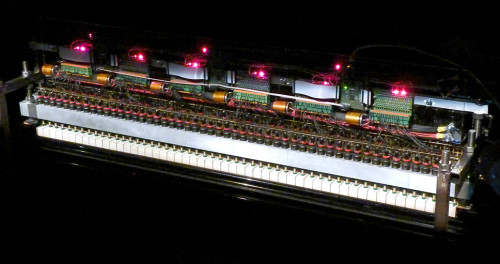
ξ for computer-controlled piano and screened text ξ
This installation explores a connecting link where language and music intersect. The brain converts what are initially abstract musical structures into a series of words in a human language – in this case the 2009 Declaration of the International Environmental Criminal Court. Peter Ablinger, along with Winifred Ritsch and Thomas Musil, use software that reconstructs the spectrum of frequencies inherent in speech thru the computer-control of a piano’s gamut of repeating half-tones and variable velocities using eighty-eight “fingers” capable of up to 16 keystrokes per second. Four photos follow showing various angles and close-ups with a short video excerpt of mine followed by the complete video (better sound without extreme extraneous room ambience) provided by Peter Ablinger himself.
(thanks to Peter Ablinger)
Origin
ⓩ ALICE (A Large Ion Collider Experiment)
For ALICE, the Large Hadron Collider (LHC) will collide lead ions to recreate the conditions just after the Big Bang under laboratory conditions. The data obtained will allow physicists to study a state of matter known as quark gluon plasma, which is believed to have existed soon after the Big Bang.
ⓨ ATLAS
ATLAS is one of two general-purpose detectors at the LHC. It will investigate a wide range of physics, including the search for the Higgs boson, extra dimensions, and particles that could make up dark matter. ATLAS will record sets of measurements on the particles created in collisions –
their paths, energies, and their identities.
ⓧ CMS (Compact Muon Solenoid)
The CMS experiment uses a general-purpose detector to investigate a wide range of physics, including the search for the Higgs boson, extra dimensions, and particles that could make up dark matter. Although it has the same scientific goals as the ATLAS experiment, it uses different technical solutions and design of its detector magnet system to achieve these.
ⓑ LHCb (Large Hadron Collider beauty)
The LHCb experiment will help to understand why we live in a Universe
that appears to be composed almost entirely of matter, but no antimatter.
Ⓖ WLCG (World Wide LHC Computing Grid)
A distributed computing and data storage infrastructure.
device art projects 2
The University of Tsukuba lies 60 km northeast of Tokyo in Tsukuba Science City which represents one of the world’s largest coordinated attempts to accelerate the rate of and improve the quality of scientific discovery. Some of the graduates and/or faculty have been covered here in an earlier post as producing device art projects such as Sachiko Kodama’s Morpho Tower, Ryota Kuwakubo’s LoopScape and Nicodama and Hiroo Iwata’s Media Vehicle. In this second part, I’ll highlight a couple of other creative artists who have been associated with the U. of Tsukuba’s R & D. We can only hope for an interest in device art to blossom in the U.S., but it appears that most American designers see it as too risky an undertaking while the general public seems ready for something new and refreshing in the area of artistic popular culture.
• Let’s introduce another work by Hiroo Awata. Although traveling on foot is the most intuitive style of locomotion, proprioceptive feedback from walking is not provided in most applications of virtual environments. With the Torus Treadmill, a virtual infinite surface is created inside a compact area with twelve sets of treadmills connected and driven in perpendicular directions. One can walk in any virtual direction while your real-world position is fixed. It’s a bit disorientating as you’ll see in these short video snippets. I kept feeling as if I needed to force the mechanism (leaning into it) instead of just relaxing with a nice virtual stroll.
• Here we have the work of Jun Mitani who creates Spherical Origami. The origami aspect is kept – folding a single sheet of paper into an artwork – but there is the added element of the possibility of curved surfaces. Using precise computer aided calculations, each paper surface shows the generated fold lines that are to be used in the process of paper manipulation.
• Twilight was one of those works that I could’ve watched for an hour. As the tree branches shake, the fluorescent lights attached to the tops would flicker in erratic patterns. You’ll notice the bottom tips moving along the steel plates motivated by a vibrating motor which creates the on-off irregularity of the light sources. Junya Kataoka [unable to find a website] has provided us with a work that emphasizes contrasts: darkness and light, natural and artificial, as well as the biotic and inorganic.
(thanks to Interactive Design)
(thanks to Paolo Tonon)
Feuerkugeln 亖 Lichtblitze 亖 Musik und Tanz
So this year’s festival starts off with a couple of huge Tesla coils parked back on the Maindeck of the Ars Electronica Quarter. Witnessing 26 kilowatts of power being converted into giant 4-meter long bolts of artificial lightning with almost a million volts of electricity modulated at audio frequencies to produce music is impressive enough, but then you have a masked fellow walk out wearing a 20-kilogram metal suit who starts dancing and interacting (conducting? eh, hem…) with the bolts and you’ve really got a show! This was The Tesla Orchestra. Maybe it was really Elvis…or maybe just a smart ape…’cause everything began with the Strauss tune that we’ve become so familiar with (and I’m not talking about Johann’s “…Danube” – tho we were right there) and just a few seconds into the performance there was a fireball that the performer swiftly and deftly maneuvered his way out of. On closer inspection of the video, it appears that the two fireballs were apparently intentional. A bit of a relief really. A couple of shaky videos of mine followed by a more professional one from Fabian Mohr:
(thanks to Fabian Mohr)
1572
1791
1819
The English cavalry charges into a crowd of over 60,000 rallying in Manchester for parliamentary reform in what becomes known as the Peterloo Massacre.
“Rise like lions after slumber
In unvanquishable number!
Shake your chains to earth like dew
Which in sleep had fallen on you:
Ye are many – they are few!”



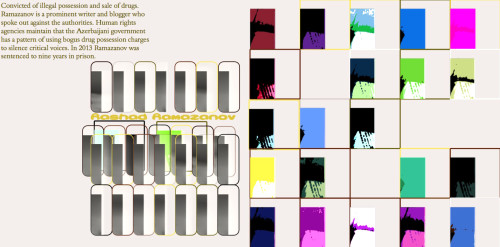












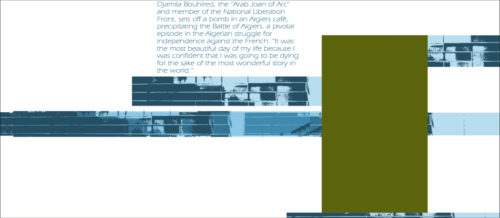
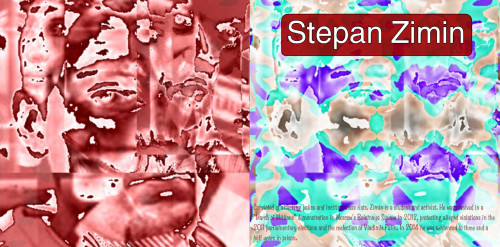

![[4] + [n9] + [c8] + [u2] - [t5] - [w]](https://stasick.org/wp-content/uploads/2012/02/4-+-n9-+-c8-+-u2-t5-w-500x177.jpg)
